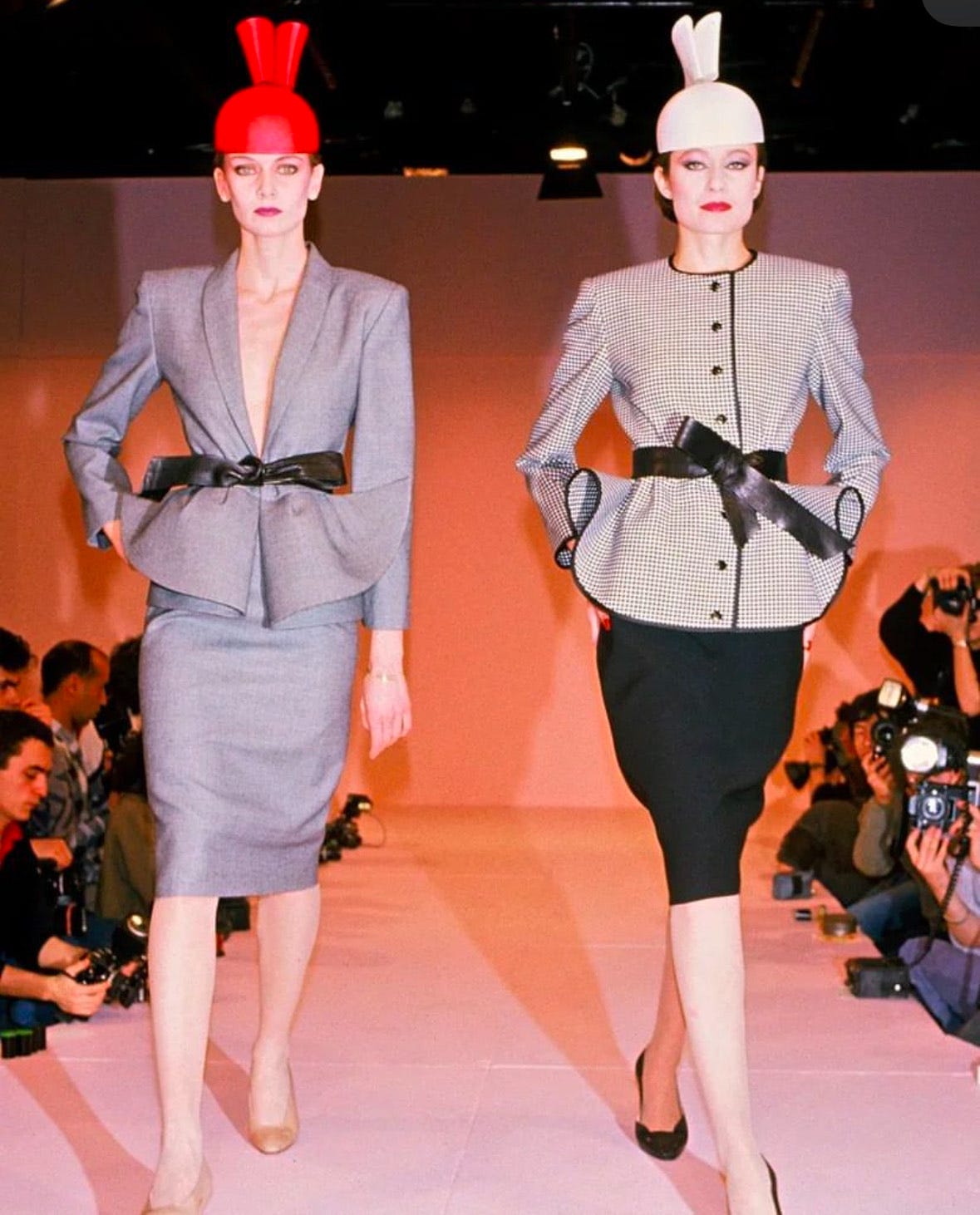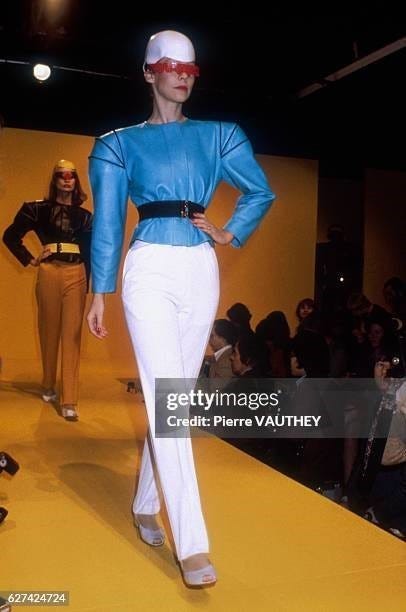Fashion as a Time Capsule
How can fashion act as something more powerful than simply clothing? Read about its power across time and in film to see your daily adornments in a new light.
Clothing serves as a tangible expression of how people respond to the world around them. Unlike art, architecture, or literature, which may take years to produce, fashion can change instantaneously in reaction to socio-economic and technological developments. This adaptability allows fashion to reflect and shape the identity of a specific time period. In cinema, fashion plays a similar role by constructing immersive worlds and shaping how audiences perceive character development and fictional settings.
Defining an Era
Serving as a timestamp that encapsulates the spirit of an era, fashion becomes one of its most memorable symbols, immortalized through media and art. In the 1980s, in reaction to widespread economic optimism, clothing became a way to showcase wealth and success, resulting in the era's opulent and dramatic styles. The 80’s are defined by bold colors, exaggerated silhouettes, and power driven styles, emblematic of capitalist excess and individualism. An example can be seen in Pierre Cardin’s 1980 Spring-Summer show, where he designed a bright blue haute couture shirt that accentuated the model’s shoulders with shoulder pads and paired it with white slacks. In alignment with capitalist ideals, the large structured shoulders and clean lines symbolized individuals' desire to take up space and assert dominance within their professional and social hierarchies.
As fashion during this period became less of a personal choice and instead a representation of success, power dressing helped drive the feminist movement in the corporate world. The structured suits with masculine influence displayed their ability to compete with men in a capitalist system. Because clothing during the period represented ambition and independence, women had an outlet to visually assert their aptitude to succeed on their own terms, further demonstrating fashion’s ability to capture one’s lived experience and become a piece of history.
Fashion in Film
Fashion’s ability to influence and reflect time periods translates seamlessly into the medium of film, where costumes serve as an essential tool for world-building. In cinematic storytelling, fashion transcends its role as mere costume design to become a visual language that conveys a character’s personality and evolution throughout the film. It also helps to immerse audiences in fictional settings by providing context and texture to the worlds depicted on screen.
For example, the film Dune utilizes costume design to establish its futuristic yet archaic universe. Jacqueline West, the film’s costume designer, created the iconic stillsuits that adorn the Fremen by drawing inspiration from ancient cultures while incorporating futuristic elements. These functional yet intricate suits not only convey the harsh desert environment of Arrakis but also demonstrate the Fremen’s resourcefulness and connection to their land. Through these designs, Dune exemplifies how fashion can serve as a critical component of storytelling, enhancing the audience’s understanding of the characters and the worlds they inhabit.

Similarly, fashion is a powerful tool for illustrating internal character development. Changes in a character’s wardrobe often reflect their evolving circumstances or mindsets. In The Devil Wears Prada, Andy Sachs (played by Anne Hathaway) undergoes a significant transformation. At the beginning of the film, her outfits are functional, reflecting her focus on practicality over aesthetics and her disdain for the fashion industry. As she decides to embrace the fashion world to excel in her career, her wardrobe evolves to include Chanel jackets, designer handbags, and elegant heels. These pieces signaled her growing understanding of the industry and her desire to belong. Andy’s transformation illustrates how clothing can be a powerful narrative tool in film.

Final Word
Through reacting quickly to societal changes and economic conditions, fashion not only mirrors the world but actively shapes how we experience and remember it. In movies, fashion can be utilized as a force that drives the plot on a number of levels. As society continues to evolve, fashion will remain a powerful medium for exploring and expressing the human experience, both in the real world and on screen, solidifying its role as a cultural force.
External Sources
Kosin, Julie. “Patricia Field on Creating the Look of “the Devil Wears Prada.” Harper’s BAZAAR, 30 June 2016, www.harpersbazaar.com/culture/film-tv/a16439/patricia-field-devil-wears-prada-10-year-anniversary-interview/.
Okwodu, J. “How Dune’s Costume Designers Created the Definitive Sci-Fi Fashion Fantasy.” Vogue, 27 Oct. 2021, www.vogue.com/slideshow/dune-costume-designers-interview-definitive-science-fiction-fantasy.
Reddy, K. “1980-1989 | Fashion History Timeline.” Fitnyc.edu, 29 May 2020, fashionhistory.fitnyc.edu/1980-1989/.
Schmidt-Rees, Hannah. “The Importance of the 1980s Power Suit.” PERSPEX, 18 Mar. 2019, www.per-spex.com/articles/2019/3/17/the-importance-of-the-1980s-power-suit.





